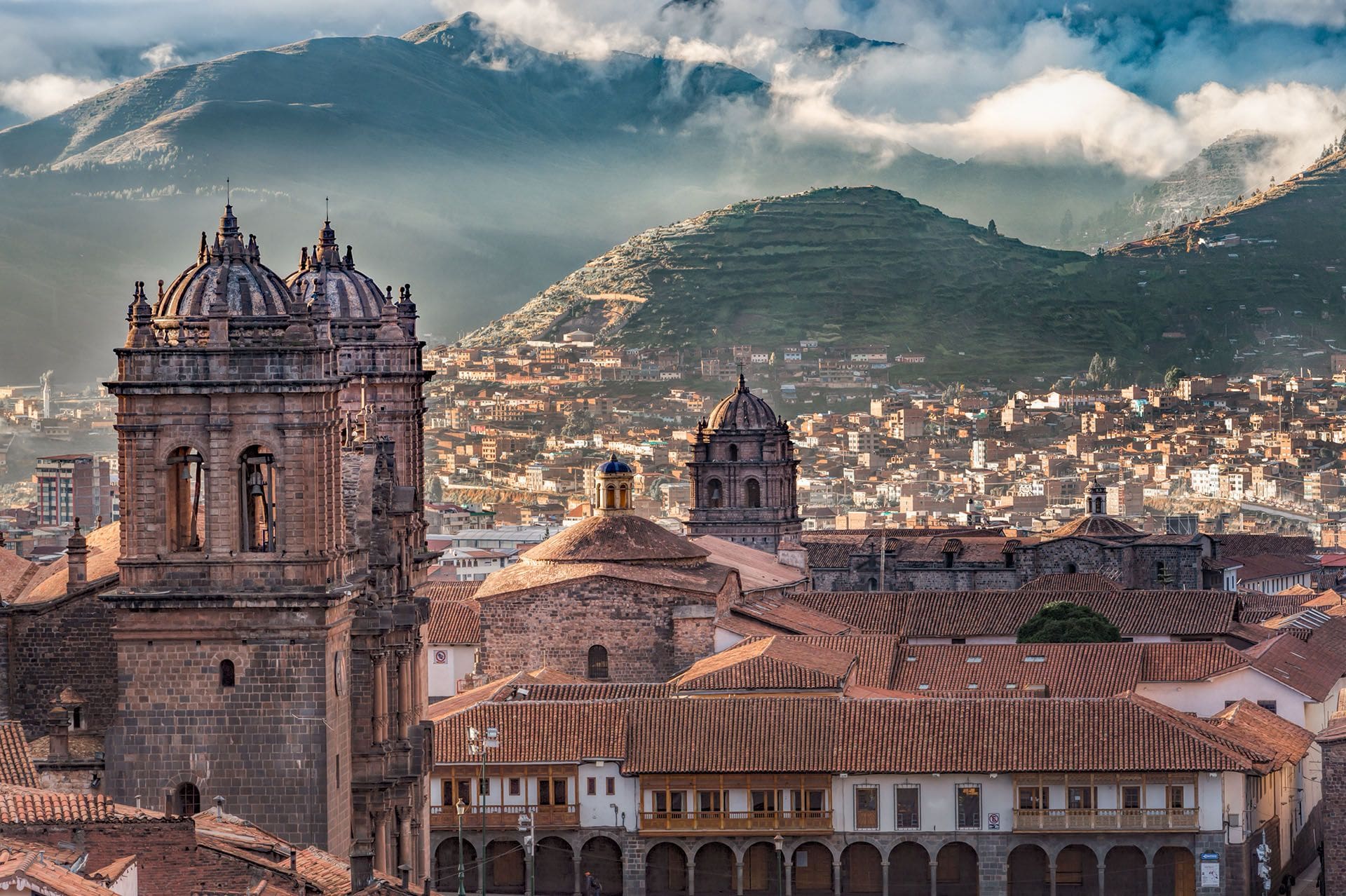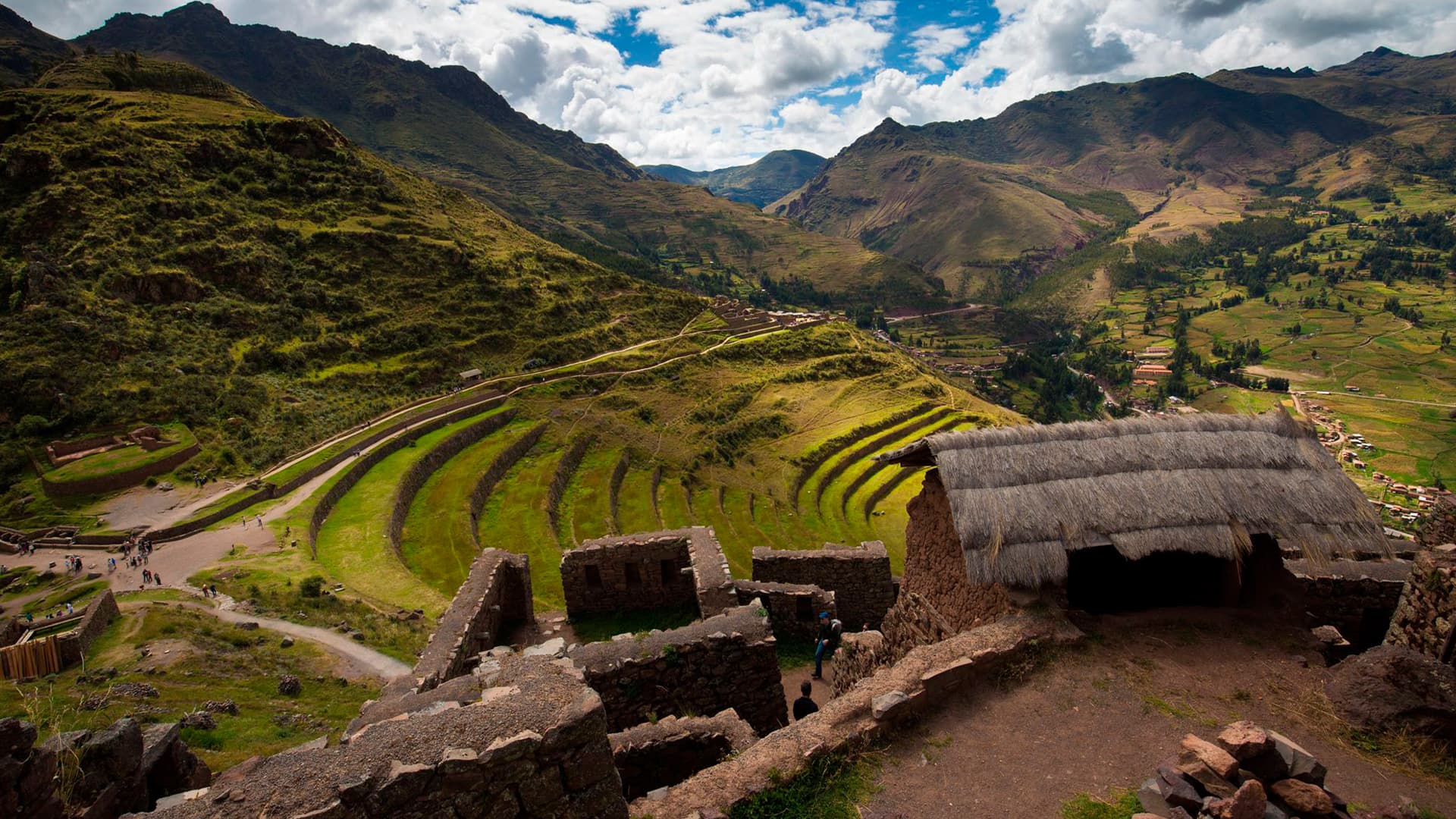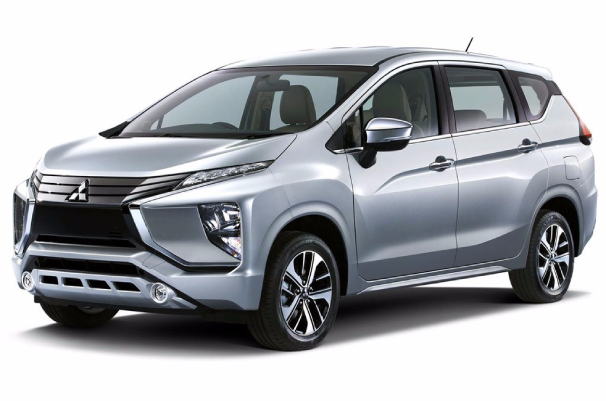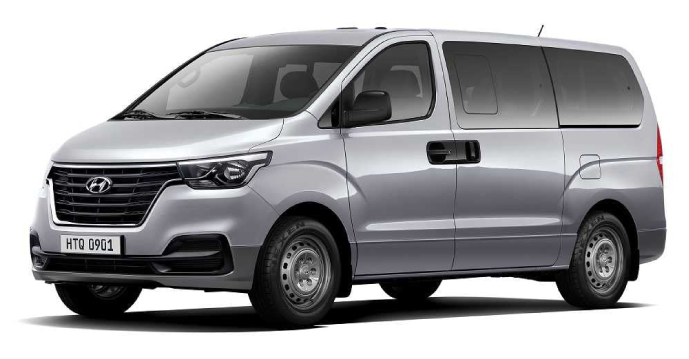
Welcome to Taxi Sacred Valley, our dedicated team is committed to providing seamless, enjoyable, and memorable travel experiences, whether you’re exploring the historic city of Cusco, embarking on a scenic journey to the many natural and built wonders of the Sacred Valley, or seeking unforgettable Sacred Valley tours from Cusco.


LA CONVENCIÓN


chumbivilcas

CANAS

ESPINAR

Start your adventure in the ancient Incan capital, Cusco, with our expert drivers who are knowledgeable locals. We offer reliable and efficient taxi services, ensuring timely pick-ups and drop-offs so you never miss a moment of your exploration. Travel from point A to point B throughout the Cusco area. We cover the entire region, from Cusco to Pisaq and from Pisaq to Ollantaytambo. Escape the city to find yourself in the nearby wonders of the area like Maras, Moray, and Chinchero. Visit outstanding natural mountains such as the Rainbow Mountain and Salkantay. Get to know one of the most incredible local markets in Urubamba, or immerse yourself in the hot tubs from Santa Teresa.

Enjoy a visual feast on your journey from Cusco to Urubamba. Our Taxi service from Urubamba to Cusco and back again not only provides a comfortable ride but also allows you to soak in the natural beauty of the region. With our drivers prioritizing your safety and comfort, your trip to Urubamba becomes a delightful experience. It can be one-way and return as well!


Cusco Airport to the Sacred Valley

Tailored Destinations of Your Choice

Your family’s safety and comfort are our top priorities. We provide baby and child car seats to ensure your little ones travel securely. Your family’s well-being is in good hands with us, and along with professional chauffeurs, you can sit back and enjoy the journey!
We can pick you up safely and deliver you to your first destination in the best suited car for your party.
Get from Point A to Point B anywhere in the Cusco region. From Cusco to Pisaq, or from Pisaq to Ollantaytambo, we have the whole area covered.
Our services are tailored to your schedule. Whether you need a full day of exploration or just a half-day excursion, our chauffeurs are here to accommodate your needs. Enjoy the freedom of customizing your travel hours with us!

Indulge in luxury with our Taxi Cusco VIP service. Experience the ultimate in comfort and style as you explore the wonders of Cusco and Sacred Valley. Our VIP vehicles are equipped with modern amenities, ensuring a lavish travel experience that complements the grandeur of your surroundings.
At Taxi Sacred Valley, your journey is our priority. So, why wait? Experience the magic of the Cusco region with Taxi Sacred Valley. Your adventure begins the moment you step into our comfortable taxis. Let’s make your journey in Peru truly unforgettable. Book your ride today, and let the exploration begin!


Up to 4 people
Up to 5 people
Up to 10 people
Up to 17 people

Up to 4 people

Up to 5 people

Up to 10 people

Up to 17 people









Contact us, or through our WhatsApp chat and we’ll be glad to help you out.
To book our taxi or transfer services, you have several convenient options available. You can make a reservation through our website by filling out the booking form, or you can contact our customer service team via email or whatsapp to assist you with the booking process.
We usually reply within an hour or two of your booking, via e-mail or WhatsApp (depending on which platform you originally contacted us). If you don’t receive a confirmation that your booking has been confirmed, please submit your request again and if possible with another email address.
We offer you several options for your comfort. You can pay with credit or debit card online, Paypal and Cash. You can pay the fare in either US dollars or Peruvian soles.
Our fares are calculated based on several factors, including the distance of the trip, the duration of the journey, and any additional services requested. We strive to provide transparent and competitive pricing, and you can request a fare estimate when making a booking.
We do not charge anything upfront so there isn’t any charge for canceling your reservation. If you pay in advance via PayPal or credit card then we’ll refund the total amount except the processing fees. In case you need to cancel your reservation, please let us know 24 hours in advance by email or WhatsApp message that includes your reservation code.
We allow advanced booking which allows you to plan your transportation ahead of time, ensuring that a vehicle will be available at the desired date and time. Simply specify your preferred pick-up time during the booking process. You can book your taxi at any time and we will reply with a confirmation. For hotel and airport pick ups, chauffeur services, outdoor activities and multi day trips, please allow at least 24 hours in advance.
We monitor your flight for early arrival or delay, and will adjust our pickup time accordingly. If you change your flight number you need to contact us either by phone or WhatsApp.
In case it is taking too long to retrieve your luggage, please let us know so the driver can keep waiting for you – send us a WhatsApp message and we’ll be happy to wait for you.
Our drivers wait for you at Cusco airport holding a sign with your name in the spot shown below. After collecting your luggage please walk outside, your driver will be there.
We offer a diverse fleet of vehicles to cater to your transportation needs. Our range includes sedans, minivans and vans up to 18 passengers, ensuring we can accommodate individuals, families, and larger groups comfortably.
Yes, all our drivers are passionate licensed professionals with experience in the transportation industry.
Yes, but only if you have light luggage or backpacks. If you have medium to large luggage then a SUV or a Van is advisable.
Absolutely! We cater to special occasions and events such as weddings, corporate gatherings, and other events. Our team can provide tailored transportation solutions to accommodate your specific needs, ensuring a seamless and memorable experience.
We provide a very affordable taxi tour and chauffeur services from Cusco to Ollantaytambo with stops in Chincheros, Maras salt mines, and Moray terraces or from Cusco to Ollantaytambo with stops in Pisac ruins and Pisac market. Please inquire about our tours or chauffeur services for more information.

Explore the most out of Chinchero by visiting these incredible places:
The origins of Chinchero are remote. There are vestiges dating from approximately two thousand years ago. The first inhabitants of the region were the Ayarmacas who, when the first Cusco governors arrived, defended their territory and offered serious resistance before being incorporated into the empire. Chinchero was the place chosen by the Inca Túpac Inca Yupanqui to establish his residence. He ordered the construction of beautiful palaces for his personal use and that of his panaca
Explore the most out of Chinchero visiting this incredible places:
The origins of Chinchero are remote. There are vestiges dating from approximately two thousand years ago. The first inhabitants of the region were the Ayarmacas who, when the first Cusco governors arrived, defended their territory and offered serious resistance before being incorporated into the empire. Chinchero was the place chosen by the Inca Túpac Inca Yupanqui to establish his residence. He ordered the construction of beautiful palaces for his personal use and that of his panaca.


Explore the most out of Moray by visiting these incredible places:
Moray (Quechua: Muray) is an archaeological site in Peru approximately 50 km (31 mi) northwest of Cuzco on a high plateau at about 3,500 meters (11,500 ft) and just west of the village of Maras. The site contains Inca ruins, mainly consisting of several terraced circular depressions, the largest of which is approximately 30 m (98 ft) deep. As with many other Inca sites, it also has an irrigation system
Explore the most out of Moray visiting this incredible places:
Moray (Quechua: Muray) is an archaeological site in Peru approximately 50 km (31 mi) northwest of Cuzco on a high plateau at about 3,500 metes (11,500 ft) and just west of the village of Maras. The site contains Inca ruins, mostly consisting of several terraced circular depressions, the largest of which is approximately 30 m (98 ft) deep. As with many other Inca sites, it also has an irrigation system.


Explore the most out of Maras by visiting these incredible places:
The Salt Mines of Maras, situated 50 km northeast of Cusco city in Peru, stands at an altitude of 3,200 meters above sea level. They are nestled on the lower part of the Salineras stream’s left bank, near the confluence with the river Vilcanota, within the jurisdiction of the Maras and Pichingoto peasant communities. Access to the salt mines can be gained through three routes: from San Francisco de Maras via the “runañan” bridle path, a road from San Francisco de Maras, and crossing the Inca bridge of Tarabamba by the Pichingoto community
Explore the most out of Maras visiting this incredible places:
The Salt Mines of Maras, situated 50 km northeast of Cusco city in Peru, stand at an altitude of 3,200 meters above sea level. They are nestled on the lower part of the Salineras stream’s left bank, near the confluence with the river Vilcanota, within the jurisdiction of the Maras and Pichingoto peasant communities. Access to the salt mines can be gained through three routes: from San Francisco de Maras via the “runañan” bridle path, a road from San Francisco de Maras, and crossing the Inca bridge of Tarabamba by the Pichingoto community.

Explore the most out of Pisaq by visiting these incredible places:
Písac (possibly from Quechua for Nothoprocta, also spelled p’isaqa) is a small town in the Sacred Valley of the Incas. It is situated on the Vilcanota River. Pisac is most known for its Incan ruins and large market, which attracts heavy tourist traffic from nearby Cusco
Explore the most out of Pisaq visiting this incredible places:
Písac (possibly from Quechua for Nothoprocta, also spelled p’isaqa) is a small town in the Sacred Valley of the Incas. It is situated on the Vilcanota River. Pisac is most known for its Incan


Explore the most out of Ollantaytambo by visiting these incredible places:
Ollantaytambo (Quechua: Ullantaytampu) is a town and an Inca archaeological site in southern Peru, some 72 km (45 mi) by road northwest of the city of Cusco. It is located at an altitude of 2,792 m (9,160 ft) above sea level. During the Inca Empire, Ollantaytambo was the royal estate of Emperor Pachacuti, who conquered the region and built the town and a ceremonial center. At the time of the Spanish conquest of Peru, it served as a stronghold for Manco Inca Yupanqui, leader of the Inca resistance. Located in the Sacred Valley of the Incas, it is now an important tourist attraction on account of its Inca ruins and its location en route to one of the most common starting points for the four-day, three-night hike known as the Inca Trail
Explore the most out of Ollantaytambo visiting this incredible places:
Ollantaytambo (Quechua: Ullantaytampu) is a town and an Inca archaeological site in southern Peru some 72 km (45 mi) by road northwest of the city of Cusco. It is located at an altitude of 2,792 m (9,160 ft) above sea level. During the Inca Empire, Ollantaytambo was the royal estate of Emperor Pachacuti, who conquered the region and built the town and a ceremonial center. At the time of the Spanish conquest of Peru, it served as a stronghold for Manco Inca Yupanqui, leader of the Inca resistance. Located in the Sacred Valley of the Incas, it is now an important tourist attraction on account of its Inca ruins and its location en route to one of the most common starting points for the four-day, three-night hike known as the Inca Trail.


Explore the most out of Urubamba by visiting these incredible places:
Urubamba (possibly from the Quechua spelling Urupampa, flat land of spiders) is a small town in Peru, located near the Vilcanota River under the snow-capped mountain Chicón. Located 1 hour and 30 min from Cusco, Urubamba is the largest town in the Sacred Valley of the Incas. It is also located near many significant ruins of the Inca Empire, including Machu Picchu. The sparse remains of the Inca palace, Quispiguanca, are within the town. Tourists often come through the town on their way to visit these sites.ta River. Pisac is most known for its Incan ruins and large market, which attracts heavy tourist traffic from nearby Cusco
Explore the most out of Urubamba visiting this incredible places:
Urubamba (possibly from the Quechua spelling Urupampa, flat land of spiders) is a small town in Peru, located near the Vilcanota River under the snow-capped mountain Chicón. Located 1 hour and 30 min from Cusco, Urubamba is the largest town in the Sacred Valley of the Incas. It is also located near a number of significant ruins of the Inca Empire, including Machu Picchu. The sparse remains of the Inca palace, Quispiguanca, are within the town. Tourists often come through the town on their way to visit these sites.


Explore the most out of Salkantay by visiting these incredible places:
Salcantay or Sallqantay (in Quechua) is the highest peak in the Vilcabamba mountain range, part of the Peruvian Andes. It is located in the Cusco Region, about 60 km (40 mi) west-northwest of the city of Cusco. It is the 38th-highest peak in the Andes and the twelfth-highest in Peru. However, as a range highpoint in deeply incised terrain, it is the second most topographically prominent peak in the country, after Huascarán
Explore the most out of Maras visiting this incredible places:
The Salt Mines of Maras, situated 50 km northeast of Cusco city in Peru, stand at an altitude of 3,200 meters above sea level. They are nestled on the lower part of the Salineras stream’s left bank, near the confluence with the river Vilcanota, within the jurisdiction of the Maras and Pichingoto peasant communities. Access to the salt mines can be gained through three routes: from San Francisco de Maras via the “runañan” bridle path, a road from San Francisco de Maras, and crossing the Inca bridge of Tarabamba by the Pichingoto community.

Explore the most out of Rainbow Mountain by visiting these incredible places:
Vinicunca, or Winikunka, also called the mountain of seven colors, rainbow mountain, or mountain of colors (the locals call it Cerro Colorado), is a mountain in Peru with an altitude of 5,200 m above sea level.
It is located on the road to the snow-capped Ausangate in the Andes of Peru, Cusco Region, between the districts of Cusipata, province of Quispicanchi, and Pitumarca, province of Canchis.
In the mid-2010s, a process of mass tourism began, attracted by its series of stripes of various colors due to its mineralogical composition present on the slopes and summits.
To visit Vinincunca or the Mountain of 7 Colors, it is necessary to travel to the town of Cusipata. Then, the trip continues along a trail to the community of Phulawasipata. From there, you can personally purchase the entrance ticket. Then begins a 6-kilometer walk to the so-called ‘Cerro Colorado,’
The Taxi trip takes about 3 hours from Cusco and about 3 to 4 hours from the Sacred Valley, depending on where you are
Mountain of 7 Colors entrance price:
Visitor Price in soles (S/.)
National tourist (Peru) S/. 15 ($4 aprox)
Foreign tourist S/. 25 ($7 apox)
Consider renting horses to reach the summit. You can rent them there and they cost around 100 soles.
Vinicunca or Winikunka, also called mountain of seven colors, rainbow mountain or mountain of colors (the locals call it Cerro Colorado), is a mountain in Peru with an altitude of 5,200 m above sea level.
It is located on the road to the snow-capped Ausangate, in the Andes of Peru, Cusco Region, between the districts of Cusipata, province of Quispicanchi, and Pitumarca, province of Canchis.
In the mid-2010s, a process of mass tourism began, attracted by its series of stripes of various colors, due to its mineralogical composition present on the slopes and summits.
To visit Vinincunca or the Mountain of 7 Colors it is necessary to travel to the town of Cusipata. . Then the trip continues along a trail to the community of Phulawasipata. From there you can personally purchase the entrance ticket. Then begins a 6-kilometer walk to the so-called ‘Cerro Colorado’,
The Taxi trip takes about 3 hours from Cusco and about 3 to 4 hours from the Sacred Valley depending on where you are.
Mountain of 7 Colors entrance price:
Visitor Price in soles (S/.)
National tourist (Peru) S/. 15 ($4 aprox)
Foreign tourist S/. 25 ($7 apox)
Consider renting horses to reach the summit. You can rent them there and they cost around 100 soles.


Santa Teresa is a small town located in the province of La Convencion, about 5 hours by car from the city of Cusco and about 3 hours and 50 hours from Urubamba. Santa Teresa is known for being a strategic stop for those heading to the famous Inca citadel of Machu Picchu, as it offers several access options to this archaeological site.
The town of Santa Teresa is characterized by its natural beauty, with a lush environment of tropical jungle and mountains that surround it. In addition to its stunning scenery, Santa Teresa is famous for the Cocalmayo thermal baths, a popular place to relax after a long hike or train ride to Machu Picchu. It is also a starting point for trekking to Machu Picchu via less traveled routes, such as the Salkantay trek.
In Santa Teresa, you will find various accommodations, from hostels and small hotels to campsites. In addition, the town has restaurants that serve typical Peruvian dishes and international food options.
In short, Santa Teresa is a tranquil and beautiful destination in the Peruvian Andes that offers a unique experience to travelers who want to explore Machu Picchu and enjoy the nature and culture of the region
Santa Teresa is a small town located in the province of La Convencion, about 5 hours by car from the city of Cusco and about 3 hours and 50 hours from Urubamba. Santa Teresa is known for being a strategic stop for those heading to the famous Inca citadel of Machu Picchu, as it offers several access options to this archaeological site.
The town of Santa Teresa is characterized by its natural beauty, with a lush environment of tropical jungle and mountains that surround it. In addition to its stunning scenery, Santa Teresa is famous for the Cocalmayo thermal baths, which are a popular place to relax after a long hike or train ride to Machu Picchu. It is also a starting point for trekking to Machu Picchu via less traveled routes, such as the Salkantay trek.
In Santa Teresa, you will find a variety of accommodation, from hostels and small hotels to campsites. In addition, the town has restaurants that serve typical Peruvian dishes and international food options.
In short, Santa Teresa is a tranquil and beautiful destination in the Peruvian Andes that offers a unique experience to travelers who want to explore Machu Picchu and enjoy the nature and culture of the region.

Explore the most out of Cusco visiting this incredible places:
It is the capital of the Cusco Region and of the Cusco Province. The city is the seventh most populous in Peru; in 2017, it had a population of 428,450. Its elevation is around 3,400 m (11,200 ft).
The city was the capital of the Inca Empire from the 13th century until the 16th-century Spanish conquest. In 1983, Cusco was declared a World Heritage Site by UNESCO with the title “City of Cuzco”. It has become a major tourist destination. The Constitution of Peru (1993) designates it as the Historical Capital of Peru.
Explore the most out of Urubamba visiting this incredible places:
Urubamba (possibly from the Quechua spelling Urupampa, flat land of spiders) is a small town in Peru, located near the Vilcanota River under the snow-capped mountain Chicón. Located 1 hour and 30 min from Cusco, Urubamba is the largest town in the Sacred Valley of the Incas. It is also located near a number of significant ruins of the Inca Empire, including Machu Picchu. The sparse remains of the Inca palace, Quispiguanca, are within the town. Tourists often come through the town on their way to visit these sites.


Explore the most out of Ollantaytambo by visiting these incredible places:
Ollantaytambo (Quechua: Ullantaytampu) is a town and an Inca archaeological site in southern Peru, some 72 km (45 mi) by road northwest of the city of Cusco. It is located at an altitude of 2,792 m (9,160 ft) above sea level. During the Inca Empire, Ollantaytambo was the royal estate of Emperor Pachacuti, who conquered the region and built the town and a ceremonial center. At the time of the Spanish conquest of Peru, it served as a stronghold for Manco Inca Yupanqui, leader of the Inca resistance. Located in the Sacred Valley of the Incas, it is now an important tourist attraction on account of its Inca ruins and its location en route to one of the most common starting points for the four-day, three-night hike known as the Inca Trail
Explore the most out of Ollantaytambo visiting this incredible places:
Ollantaytambo (Quechua: Ullantaytampu) is a town and an Inca archaeological site in southern Peru some 72 km (45 mi) by road northwest of the city of Cusco. It is located at an altitude of 2,792 m (9,160 ft) above sea level. During the Inca Empire, Ollantaytambo was the royal estate of Emperor Pachacuti, who conquered the region and built the town and a ceremonial center. At the time of the Spanish conquest of Peru, it served as a stronghold for Manco Inca Yupanqui, leader of the Inca resistance. Located in the Sacred Valley of the Incas, it is now an important tourist attraction on account of its Inca ruins and its location en route to one of the most common starting points for the four-day, three-night hike known as the Inca Trail.


Explore the most out of Pisaq by visiting these incredible places:
Písac (possibly from Quechua for Nothoprocta, also spelled p’isaqa) is a small town in the Sacred Valley of the Incas. It is situated on the Vilcanota River. Pisac is most known for its Incan ruins and large market, which attracts heavy tourist traffic from nearby Cusco
Explore the most out of Pisaq visiting this incredible places:
Písac (possibly from Quechua for Nothoprocta, also spelled p’isaqa) is a small town in the Sacred Valley of the Incas. It is situated on the Vilcanota River. Pisac is most known for its Incan


Explore the most out of Urubamba by visiting these incredible places:
Urubamba (possibly from the Quechua spelling Urupampa, flat land of spiders) is a small town in Peru, located near the Vilcanota River under the snow-capped mountain Chicón. Located 1 hour and 30 min from Cusco, Urubamba is the largest town in the Sacred Valley of the Incas. It is also located near many significant ruins of the Inca Empire, including Machu Picchu. The sparse remains of the Inca palace, Quispiguanca, are within the town. Tourists often come through the town on their way to visit these sites.ta River. Pisac is most known for its Incan ruins and large market, which attracts heavy tourist traffic from nearby Cusco
Explore the most out of Urubamba visiting this incredible places:
Urubamba (possibly from the Quechua spelling Urupampa, flat land of spiders) is a small town in Peru, located near the Vilcanota River under the snow-capped mountain Chicón. Located 1 hour and 30 min from Cusco, Urubamba is the largest town in the Sacred Valley of the Incas. It is also located near a number of significant ruins of the Inca Empire, including Machu Picchu. The sparse remains of the Inca palace, Quispiguanca, are within the town. Tourists often come through the town on their way to visit these sites.


Explore the most out of Cusco visiting this incredible places:
It is the capital of the Cusco Region and of the Cusco Province. The city is the seventh most populous in Peru; in 2017, it had a population of 428,450. Its elevation is around 3,400 m (11,200 ft).
The city was the capital of the Inca Empire from the 13th century until the 16th-century Spanish conquest. In 1983, Cusco was declared a World Heritage Site by UNESCO with the title “City of Cuzco”. It has become a major tourist destination. The Constitution of Peru (1993) designates it as the Historical Capital of Peru.
Explore the most out of Urubamba visiting this incredible places:
Urubamba (possibly from the Quechua spelling Urupampa, flat land of spiders) is a small town in Peru, located near the Vilcanota River under the snow-capped mountain Chicón. Located 1 hour and 30 min from Cusco, Urubamba is the largest town in the Sacred Valley of the Incas. It is also located near a number of significant ruins of the Inca Empire, including Machu Picchu. The sparse remains of the Inca palace, Quispiguanca, are within the town. Tourists often come through the town on their way to visit these sites.


Santa Teresa is a small town located in the province of La Convencion, about 5 hours by car from the city of Cusco and about 3 hours and 50 hours from Urubamba. Santa Teresa is known for being a strategic stop for those heading to the famous Inca citadel of Machu Picchu, as it offers several access options to this archaeological site.
The town of Santa Teresa is characterized by its natural beauty, with a lush environment of tropical jungle and mountains that surround it. In addition to its stunning scenery, Santa Teresa is famous for the Cocalmayo thermal baths, a popular place to relax after a long hike or train ride to Machu Picchu. It is also a starting point for trekking to Machu Picchu via less traveled routes, such as the Salkantay trek.
In Santa Teresa, you will find various accommodations, from hostels and small hotels to campsites. In addition, the town has restaurants that serve typical Peruvian dishes and international food options.
In short, Santa Teresa is a tranquil and beautiful destination in the Peruvian Andes that offers a unique experience to travelers who want to explore Machu Picchu and enjoy the nature and culture of the region
Santa Teresa is a small town located in the province of La Convencion, about 5 hours by car from the city of Cusco and about 3 hours and 50 hours from Urubamba. Santa Teresa is known for being a strategic stop for those heading to the famous Inca citadel of Machu Picchu, as it offers several access options to this archaeological site.
The town of Santa Teresa is characterized by its natural beauty, with a lush environment of tropical jungle and mountains that surround it. In addition to its stunning scenery, Santa Teresa is famous for the Cocalmayo thermal baths, which are a popular place to relax after a long hike or train ride to Machu Picchu. It is also a starting point for trekking to Machu Picchu via less traveled routes, such as the Salkantay trek.
In Santa Teresa, you will find a variety of accommodation, from hostels and small hotels to campsites. In addition, the town has restaurants that serve typical Peruvian dishes and international food options.
In short, Santa Teresa is a tranquil and beautiful destination in the Peruvian Andes that offers a unique experience to travelers who want to explore Machu Picchu and enjoy the nature and culture of the region.

Explore the most out of Rainbow Mountain by visiting these incredible places:
Vinicunca, or Winikunka, also called the mountain of seven colors, rainbow mountain, or mountain of colors (the locals call it Cerro Colorado), is a mountain in Peru with an altitude of 5,200 m above sea level.
It is located on the road to the snow-capped Ausangate in the Andes of Peru, Cusco Region, between the districts of Cusipata, province of Quispicanchi, and Pitumarca, province of Canchis.
In the mid-2010s, a process of mass tourism began, attracted by its series of stripes of various colors due to its mineralogical composition present on the slopes and summits.
To visit Vinincunca or the Mountain of 7 Colors, it is necessary to travel to the town of Cusipata. Then, the trip continues along a trail to the community of Phulawasipata. From there, you can personally purchase the entrance ticket. Then begins a 6-kilometer walk to the so-called ‘Cerro Colorado,’
The Taxi trip takes about 3 hours from Cusco and about 3 to 4 hours from the Sacred Valley, depending on where you are
Mountain of 7 Colors entrance price:
Visitor Price in soles (S/.)
National tourist (Peru) S/. 15 ($4 aprox)
Foreign tourist S/. 25 ($7 apox)
Consider renting horses to reach the summit. You can rent them there and they cost around 100 soles.
Vinicunca or Winikunka, also called mountain of seven colors, rainbow mountain or mountain of colors (the locals call it Cerro Colorado), is a mountain in Peru with an altitude of 5,200 m above sea level.
It is located on the road to the snow-capped Ausangate, in the Andes of Peru, Cusco Region, between the districts of Cusipata, province of Quispicanchi, and Pitumarca, province of Canchis.
In the mid-2010s, a process of mass tourism began, attracted by its series of stripes of various colors, due to its mineralogical composition present on the slopes and summits.
To visit Vinincunca or the Mountain of 7 Colors it is necessary to travel to the town of Cusipata. . Then the trip continues along a trail to the community of Phulawasipata. From there you can personally purchase the entrance ticket. Then begins a 6-kilometer walk to the so-called ‘Cerro Colorado’,
The Taxi trip takes about 3 hours from Cusco and about 3 to 4 hours from the Sacred Valley depending on where you are.
Mountain of 7 Colors entrance price:
Visitor Price in soles (S/.)
National tourist (Peru) S/. 15 ($4 aprox)
Foreign tourist S/. 25 ($7 apox)
Consider renting horses to reach the summit. You can rent them there and they cost around 100 soles.


Explore the most out of Salkantay by visiting these incredible places:
Salcantay or Sallqantay (in Quechua) is the highest peak in the Vilcabamba mountain range, part of the Peruvian Andes. It is located in the Cusco Region, about 60 km (40 mi) west-northwest of the city of Cusco. It is the 38th-highest peak in the Andes and the twelfth-highest in Peru. However, as a range highpoint in deeply incised terrain, it is the second most topographically prominent peak in the country, after Huascarán
Explore the most out of Maras visiting this incredible places:
The Salt Mines of Maras, situated 50 km northeast of Cusco city in Peru, stand at an altitude of 3,200 meters above sea level. They are nestled on the lower part of the Salineras stream’s left bank, near the confluence with the river Vilcanota, within the jurisdiction of the Maras and Pichingoto peasant communities. Access to the salt mines can be gained through three routes: from San Francisco de Maras via the “runañan” bridle path, a road from San Francisco de Maras, and crossing the Inca bridge of Tarabamba by the Pichingoto community.

Explore the most out of Moray by visiting these incredible places:
Moray (Quechua: Muray) is an archaeological site in Peru approximately 50 km (31 mi) northwest of Cuzco on a high plateau at about 3,500 meters (11,500 ft) and just west of the village of Maras. The site contains Inca ruins, mainly consisting of several terraced circular depressions, the largest of which is approximately 30 m (98 ft) deep. As with many other Inca sites, it also has an irrigation system
Explore the most out of Moray visiting this incredible places:
Moray (Quechua: Muray) is an archaeological site in Peru approximately 50 km (31 mi) northwest of Cuzco on a high plateau at about 3,500 metes (11,500 ft) and just west of the village of Maras. The site contains Inca ruins, mostly consisting of several terraced circular depressions, the largest of which is approximately 30 m (98 ft) deep. As with many other Inca sites, it also has an irrigation system.


Explore the most out of Chinchero by visiting these incredible places:
The origins of Chinchero are remote. There are vestiges dating from approximately two thousand years ago. The first inhabitants of the region were the Ayarmacas who, when the first Cusco governors arrived, defended their territory and offered serious resistance before being incorporated into the empire. Chinchero was the place chosen by the Inca Túpac Inca Yupanqui to establish his residence. He ordered the construction of beautiful palaces for his personal use and that of his panaca
Explore the most out of Chinchero visiting this incredible places:
The origins of Chinchero are remote. There are vestiges dating from approximately two thousand years ago. The first inhabitants of the region were the Ayarmacas who, when the first Cusco governors arrived, defended their territory and offered serious resistance before being incorporated into the empire. Chinchero was the place chosen by the Inca Túpac Inca Yupanqui to establish his residence. He ordered the construction of beautiful palaces for his personal use and that of his panaca.
